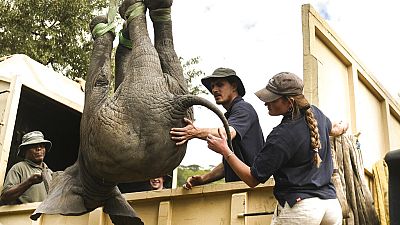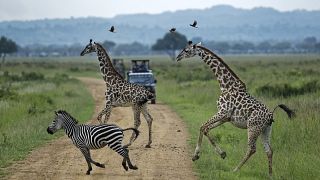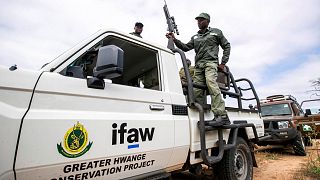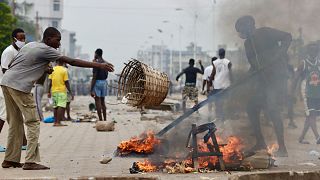Zimbabwe
Zimbabwe has begun moving more than 2,500 wild animals from a southern reserve to one in the country's north to rescue them from drought, as the ravages of climate change replace poaching as the biggest threat to wildlife.
About 400 elephants, 2,000 impalas, 70 giraffes, 50 buffaloes, 50 wildebeest, 50 zebras, 50 elands, 10 lions, and a pack of 10 wild dogs are among the animals being moved from Zimbabwe's Save Valley Conservancy to three conservancies in the north — Sapi, Matusadonha, and Chizarira — in one of southern Africa's biggest live animal capture and translocation exercises.
-"Project Rewild Zambezi"-
"Project Rewild Zambezi," operation simply means moving the animals to an area in the Zambezi River valley to rebuild the wildlife populations there.
It's the first time in 60 years that Zimbabwe has embarked on such a mass internal movement of wildlife. Between 1958 and 1964, when the country was white-minority-ruled Rhodesia, more than 5,000 animals were moved in what was called "Operation Noah."
That operation rescued wildlife from the rising water caused by the construction of a massive hydro-electric dam on the Zambezi River that created one of the world's largest man-made lakes, Lake Kariba.
-Climate change impact-
This time it's the lack of water that has made it necessary to move wildlife as their habitat has become parched by prolonged drought, said Tinashe Farawo, spokesman for the Zimbabwe National Parks and Wildlife Management Authority.
The parks agency issued permits to allow the animals to be moved to avert "a disaster from happening," said Farawo.
"We are doing this to relieve pressure. For years we have fought poaching and just as we are winning that war, climate change has emerged as the biggest threat to our wildlife," Farawo told The Associated Press.
"Many of our parks are becoming overpopulated and there is little water or food. The animals end up destroying their own habitat, they become a danger unto themselves and they encroach neighboring human settlements for food resulting in incessant conflict," he said.
-Sapi Reserve-
One of the new homes for the animals moved in Zimbabwe is Sapi Reserve. the privately-run 280,000-acre private concession is east of Mana Pools National Park, a UNESCO World Heritage Site known for its splendid setting along the Zambezi River that forms the border between Zimbabwe with Zambia.
Sapi "is the perfect solution for many reasons," Great Plains chief executive officer Dereck Joubert said on the foundation's website.
"This reserve forms the middle-Zambezi biosphere, totaling 1.6 million acres," wrote Joubert. "From the 1950s until we took it over in 2017, decades of hunting had decimated wildlife populations in Sapi Reserve. We are rewilding and restoring the wild back to what it once was."













01:00
Animal shelters in the US use live music to soothe anxious pets
02:14
Scientists find way to identify elephant ivory disguised as legal mammoth ivory
02:01
Raptor rehab: Moroccan facility rescues birds of prey and prepares them to return to the wild
01:47
Chinese city of Xuchang is world's biggest producer of wigs
01:15
U.S. considers adding more African countries to travel ban
01:51
In this Moroccan crocodile park, children learn about the environment